Scottish cats: types of breed, features of maintenance and upbringing
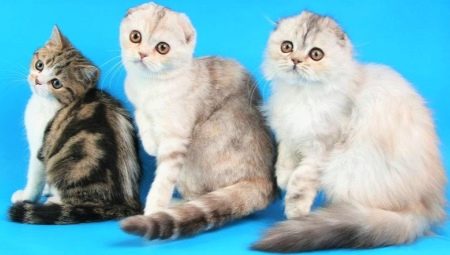
The Scottish cat can become a favorite pet and even a member of the family. This breed has several varieties, which have both common features and significant differences. Our article is dedicated to this fluffy representative of the fauna, which has an elegant appearance and a good disposition.

Origin story
This breed is the result of natural genetic mutations. About 50 years ago in Scotland, an ordinary domestic cat was born kitten with small hanging ears. The animal was pretty pretty, however, for many years features of its appearance were considered defects. In the next generation, after crossing the female with an ordinary yard cat, several babies were born hanging ears - from that moment the history of the Scottish cat breed began.
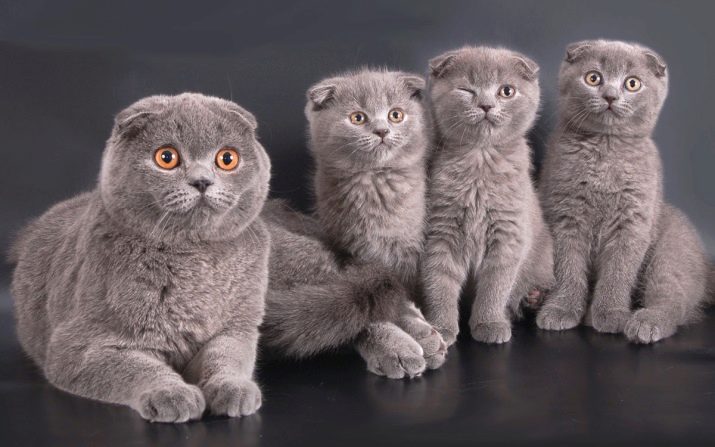
This animal is a direct descendant of the British shorthair cat. A feature of this breed is that in one litter, both lop-eared and straight-eared representatives are born. This is due to the mandatory presence of one straight parent. Thus, Foldness is transmitted to offspring in 50% of cases.
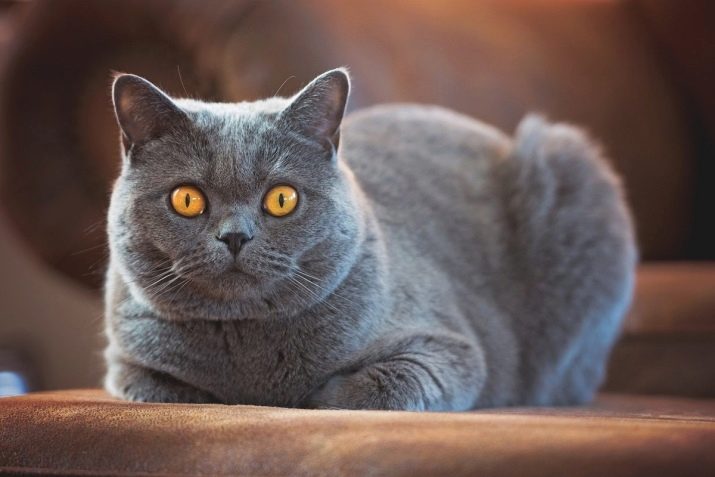
It is forbidden to bring a lop-eared representative with the same as it is prohibited, since kittens are born with defects.
By the 70s of the last century, the breeding of Scots was not so intensive, since in England they came to the conclusion that babies are born with problems of musculoskeletal function. Later, geneticists corrected this mutation without harming the kittens' health. After 10 years, the Scots gained popularity, and the breed standards for these animals were determined. Since 1994, the Scottish breed has been officially recognized in the American Cat Fanciers Association, separately highlighting both Fold and Straight cats.
Description
The Scottish cat looks adorable, she has a cute round face and huge innocent eyes. The cat's coat is like plush, pleasant to the touch.
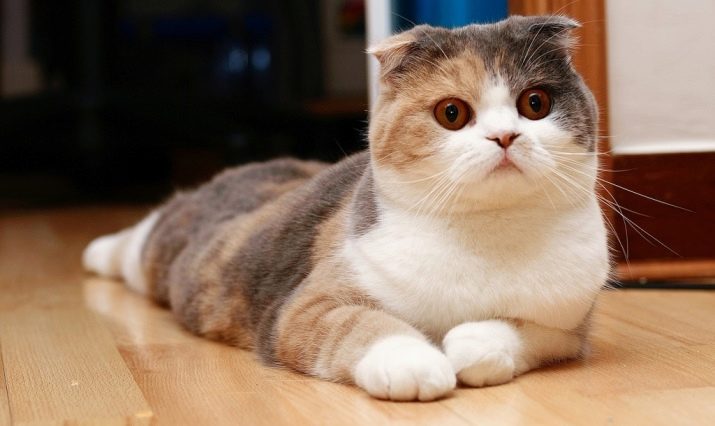
Features of the breed:
- a strong muscular body that is in the correct proportions;
- correctly developed short neck;
- the head is round and of medium size, the cheeks are well developed;
- the ears are set wide apart and have tapered tips;
- paws are small, thick;
- the tail is voluminous, short in length, its base is wide, and the end is pointed;
- the eyes are large, round, set wide apart, protruding, blue, yellow, orange or almost red;
- the coat is thin, densely covers the body of the cat, the color can be of any shade.
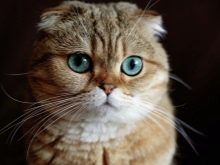
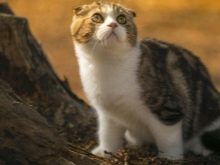
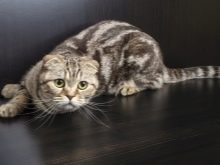
The Scottish cat is of medium size. An adult pet weighs 3.5 to 6 kilograms. Newborn kittens have some defect in the structure of the spine, tail and limbs. When born, all babies have the usual ears. When the kittens are 3 weeks old, a crease begins to form on their ears.
By the age of one month, babies already show lop-earedness.

As for the wool covering of the body of cats, then nature has done an excellent job on this issue. Scots have a luxurious fur coat in a wide palette of shades, or their wool can be monochromatic and have a tiger, marble, spotted pattern. Animals look spectacular, the main color of which is white with colored spots.
- Wang. This breed has a white coat and several spots on its head. Tail color is monochromatic.
- Harlequin. Only a fifth of the animal's body is painted white; large spots of a different shade may be present on the fur coat, and most often they are located on the head, back, croup. The tail is usually the same color. If the color of the cat is predominantly white, then her eyes are usually blue.
- Bicolor. Only half of the pet's body is painted white. The cat has a white collar on its neck, and on its face there is a white spot in the form of an inverted swoosh.
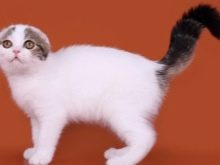
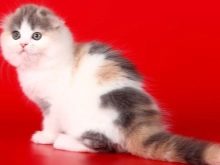
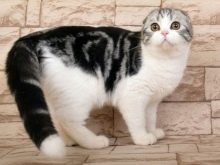
Many breeders prefer the Scottish cat's solid color, but the coat color can vary from one animal to another.
- Pure white color without impurities. Some kittens may have spots at birth, but they disappear as they grow up.
- Black color in an animal it is usually present from the root of the hair to the tip. Such a cat will have black muzzle and even nose. A factor for disqualification is the presence of white, rusty or brown hairs on the fur coat of the animal, as well as a gray undercoat.
- Blue color must be characterized by uniformity. By the standard, Scots can be painted in any shade of blue. Among the disadvantages of this color, one can distinguish the presence of white hairs, a rusty and brown shade, as well as a different shade of wool and undercoat.
- Occurs and lilac color wool with a pink tint. The nose of this cat usually has a lavender pink hue. The undercoat is gray, and the coat may have patterns.
- Red (red) color should be uniform and rich. On the top of the head and on the legs, there may be a slight pattern in the form of half rings. In such representatives of the breed, the tip of the tail has a light shade.
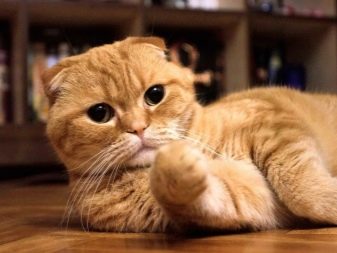
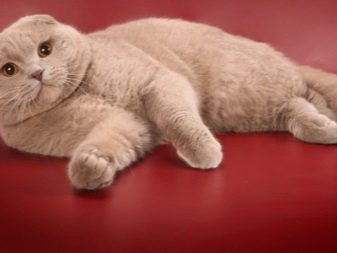
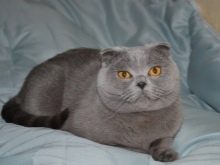
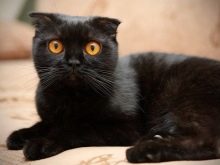
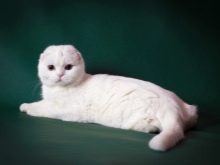
There are also Scottish cats tortoiseshellwhich combines black, red, cream, blue and chocolate colors. All of these shades are evenly mixed throughout the body of the animal. The undercoat of these animals is gray, and the nose is two-colored.
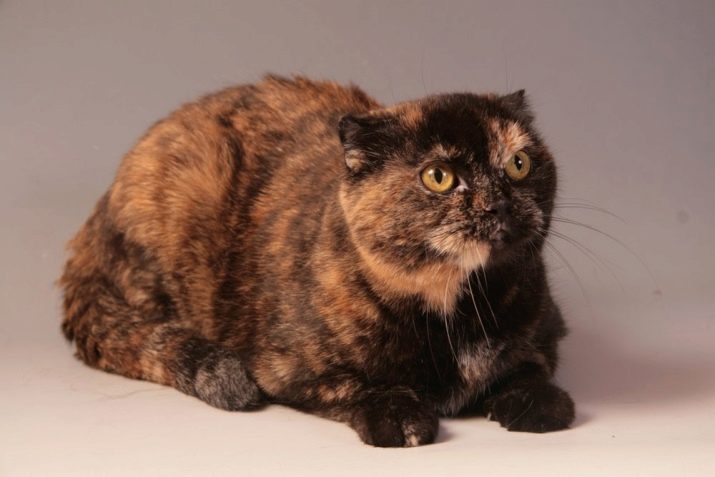
The advantages of the breed include the following features:
- sociability, attachment to a person, good mental development;
- independence and restraint;
- attractiveness of appearance, uniqueness of the image due to lop-earedness and huge eyes;
- undemanding care;
- cleanliness.
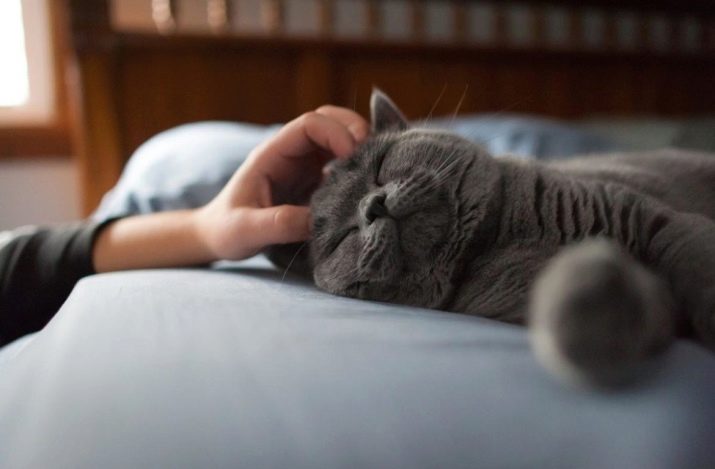
Cons of the breed:
- profusion of molting;
- possible rancor;
- hyperactivity of kittens;
- lack of a sense of proportion in food consumption;
- the likelihood of health problems.
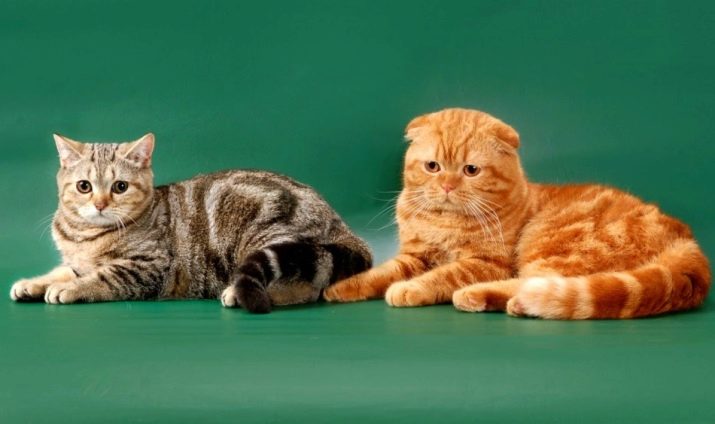
The Scottish cat has its own positive and negative characteristics, but they are extremely individual, since each representative of the breed has its own character.
Character traits
Scottish kitten, while still small, has the habits of an adult representative of the breed. At 2 months old, babies are affectionate, inquisitive and very playful.
This animal is characterized by kindness, however, despite the external cuteness and similarity to a plush toy, this cat is quite wayward and willful. An adult does not show aggression and is loyal to young children, but is always able to stand up for itself if it is hurt or discomfortable.
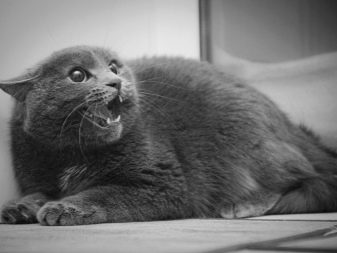
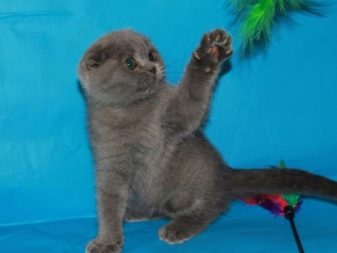
The behavior of the Scotsman testifies to his sociability, desire to contact the owner, to play outdoor games. An already grown cat often does dirty tricks behind a person's back. This pet is not touchy or vindictive, but rather jealous. The Scottish cat will try to be the center of attention of the whole family no matter what.
The pet loves to sit in the arms of its owner at any time of the day. This creature is intelligent and docile, as well as easygoing and balanced. The Scots make soft sounds in the form of meows, but they do this infrequently. They are not characterized by constant snorting.
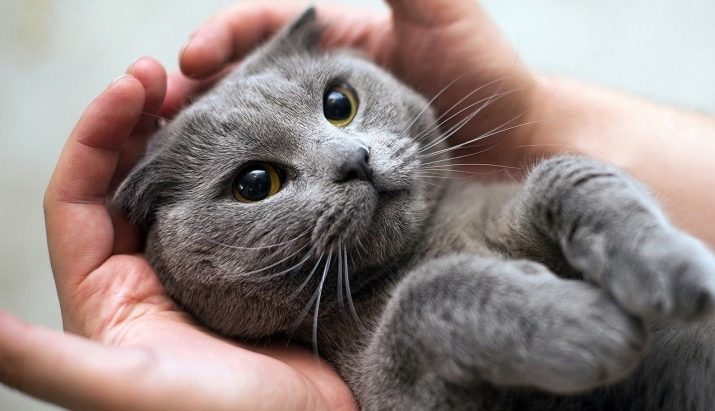
The pet can lie on its back for a long time in front of the owner's feet, thereby showing its trust in the person.
The Scottish cat easily gets along with other cats and dogs, and also easily gets used to a new family member. Scratching and biting is not typical for a Scottish, so if the pet is aggressive, then this may be caused by an illness or a personality trait of a particular individual.

Life span
Adorable and charming cats are in good health. On average, their life expectancy is 15 years. Provided that the animal has good heredity and is properly looked after, the pet can live for two decades.
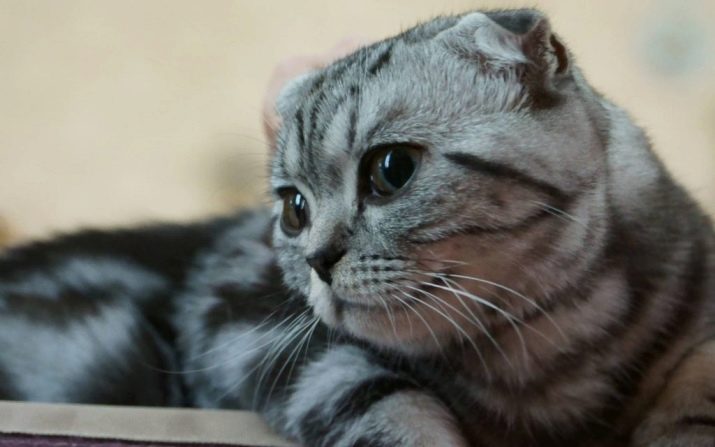
The following factors can reduce the life span of a Scottish.
- Weakness of the skeletal system - representatives of the breed are prone to bone and cartilage defects, which can also appear in an adult animal.
- Possibility of obesity - with an imbalance in nutrition, Scottish quickly gains excess weight, which has a negative effect on the work of the heart and liver.
- If the pet is long-haired, then the presence of uncombed mats can interfere with its freedom of movement. Lack of hair care can cause physical inactivity and muscle weakness due to the development of physical inactivity.
- A lop-eared animal has ear problems, where dirt and sulfur can accumulate, which cause inflammation with severe complications.
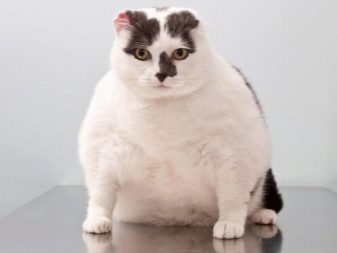
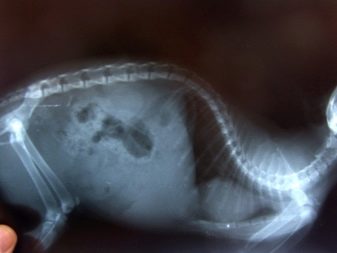
In order not to shorten the life of your beloved pet, you should adhere to the following rules:
- vaccinate the kitten in a timely manner;
- feed the animal correctly;
- feed your pet with mineral supplements to strengthen bone and cartilage systems;
- regularly carry out hygiene procedures related to cleaning the ears, combing the coat;
- the sterilization procedure can significantly increase the life span of a Scottish, regardless of the sex of the pet.
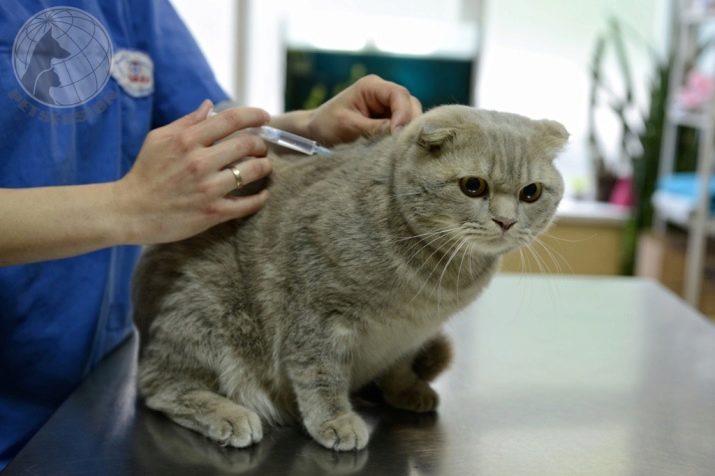
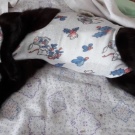
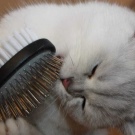
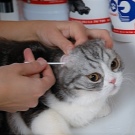
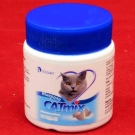

When purchasing a kitten, it is worth checking well the state of its health, in particular of the joints. It is also worth paying attention to the health of the animal's parents by examining their medical records.
You can take the baby to your home at the age of 2-3 months, by this age the kitten will already be completely strong.
Views
This breed is presented in several varieties, each of which has its own characteristics.
- Scottish fold. This is a Scottish Fold cat, the main feature of which can be called a spherical head and hanging ears adjacent to it. In addition, fluffy cats have wide, rounded eyes. These animals are like curious children. The Scottish Fold has a soft and smooth plush coat with a well defined undercoat.
In an animal of medium size, the body is with rounded lines, the limbs are well formed, the legs are round. The tail is of medium length and a pointed end.
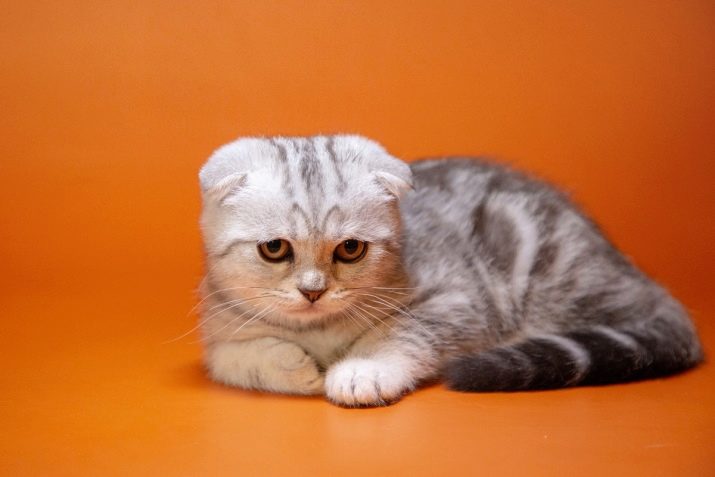
- Scottish straight. The body is of moderate length. On the paws, the toes are tightly compressed. The pet's head has a rounded shape with a convex forehead and a round muzzle.
The ears are medium, erect, with pointed tips. The area of the lower jaw is rounded, with a short neck underneath. The animal's coat is of medium length.
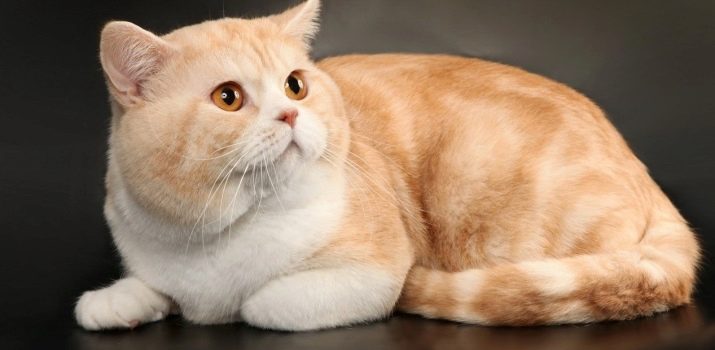
- Highland Fold. It is a type of Scottish cat with a rounded head, strong chin and a high, dome-shaped forehead. The neck is quite powerful, the cheeks are well developed. The cat's nose is wide and short, there is a smooth transition to the forehead. The ears of the animal are folded and lowered forward, but due to the large length of the coat, it can be concluded that they are absent.
The eyes are wide apart, round and large. The body is compact. The disadvantages of the variety include lack of mobility and short-legged cats... On the paws there are rounded fingers, gathering in a pillow.
The tail is of medium length, flexible and tapering towards the tip. The Scottish Fold long-haired cat has a beautiful coat, it is soft, light, silky, has a uniform structure. On the back, muzzle and legs, the coat is shorter in size than on the rest of the body.
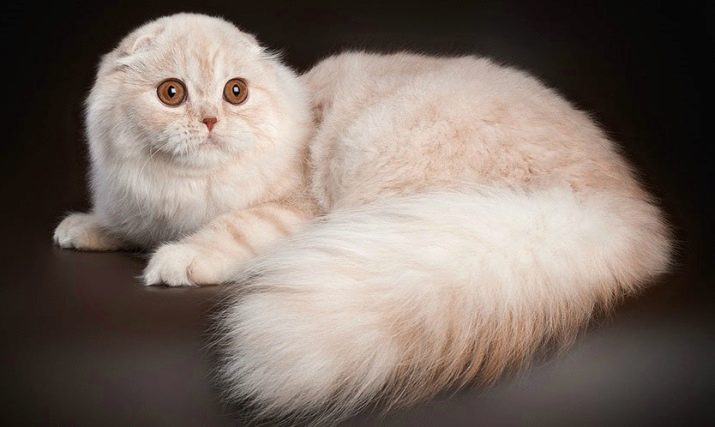
- Highland Stride. Semi-longhaired Scottish cats are considered a rare breed. They look beautiful, graceful, have erect ears and elongated flowing hair. These Scottish dogs do not require daily brushing, so caring for the animal is easy. Their ears are small, stand upright, have a rounded end and are evenly covered with hair.
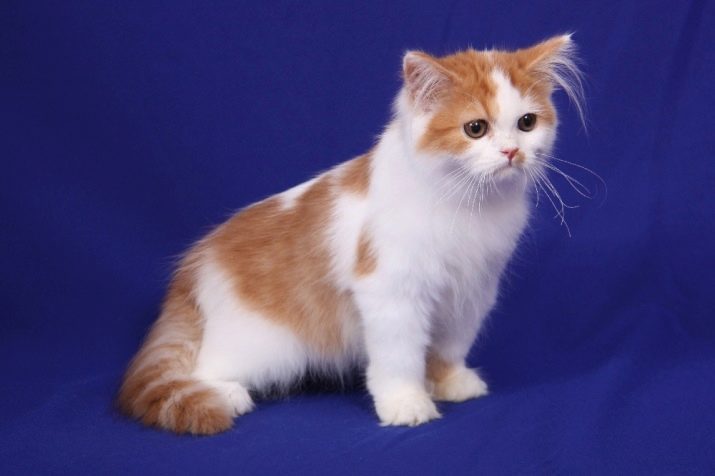
Conditions of detention
Scottish cats are considered one of the easiest pets to care for. They feel great both in a small apartment and in a private house. For an animal, it is worth buying or making your own personal sleeping place with your own hands. It is also recommended to purchase scratching post, the length of which should correspond to the height of the Scottish... You should not give up buying a carrier to transport your pet if necessary.
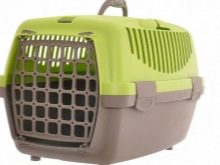
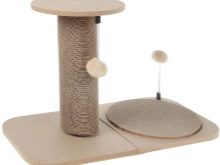
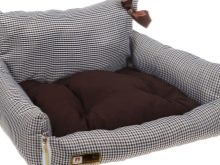
The Scots are not fussy about the content. In order for the animal to live comfortably in the room, it must be clean and safe. This pet is extremely clean, he tidies his coat himself and quickly gets used to walking in the litter box.
Before you bring a small pet into the house, you need to do the following.
- Remove unnecessary items from the kitten's access area. For example, wires, breakable and sharp objects.
- Purchase utensils for food and water for the animal. Heavy metal or ceramic cookware is the best option.
- Install the tray and fill it with litter. Kittens should buy a container with low sides, and as they grow older, they change it to a higher model.
- Prepare a place to rest - it can be a lounger or a blanket folded several times.
- Buy food, toys, scratching post.

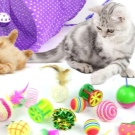
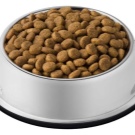
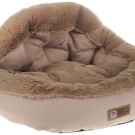
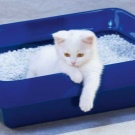
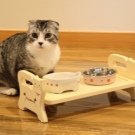
Hair care
Scottish cats can be shorthaired and semi-longhaired. With short-haired cats, there is little hassle. Every week, their wool is combed out using a special mitten or a brush with natural bristles. Semi-long-haired representatives of the breed should purchase a comb that has a Teflon-coated teeth. The animal should be taught to comb from a young age.
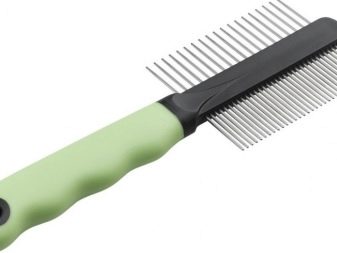

The animals kept in the house are bathed monthly. Scots usually react well to water, but they should only wash their wool if it gets dirty. For this procedure, you need to buy a special shampoo for cats. When bathing your pet, you need to ensure that to keep water out of his ears. After washing, the cats are wiped and sent to a warm place where there is no draft.
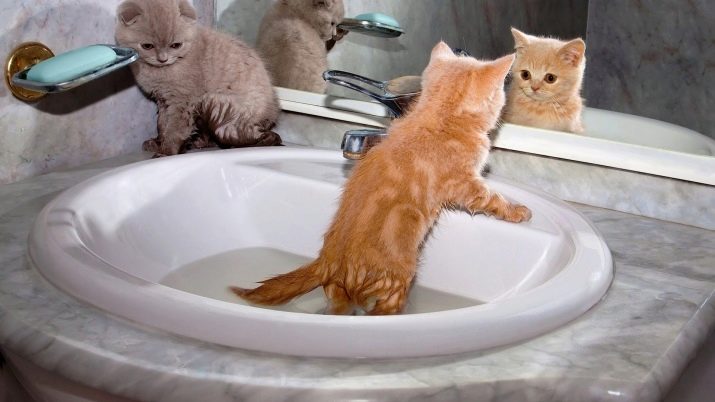
For water procedures, colorless and odorless shampoos are preferred, in which there are no harmful chemical ingredients and allergens. Scottish cats that participate in exhibitions are bathed depending on the color of the coat. Dark animals should be washed a week before the event, and light animals - 5 days.
It is best to give preference to shampoos corresponding to the type of coat and its color.
Haircuts for Scottish cats are unpleasant, but common procedures. Pets are cut and hairstyled for the same purpose as other animals. Such a procedure can be carried out only under the condition of the formation of tangles, as well as after applying medications or in order to remove dirt.
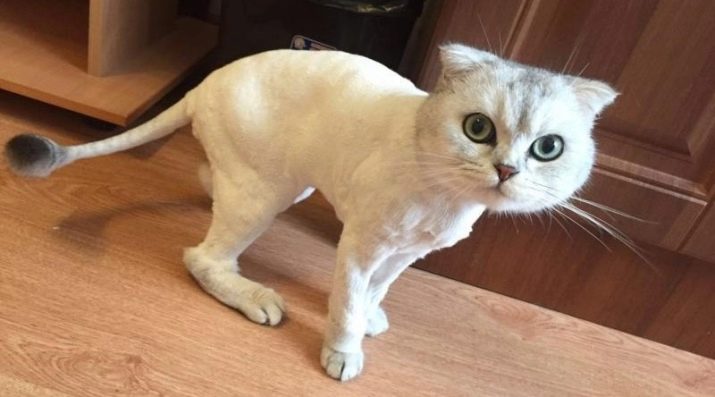
Nail care
Domestic cats need to have their nails trimmed. This process is quite simple and does not cause any discomfort to the animal. Scottish should be put on your lap and, taking his paw in your hands, press on the pads. When the pet releases its claws, they can be trimmed. In this process main – do not damage the living body of the claw. You need to trim the claws carefully, once every 2-3 weeks.
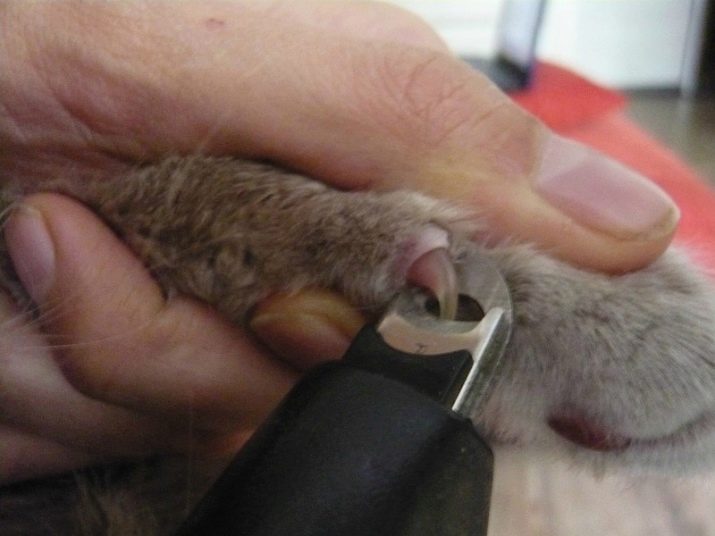
Hygiene of eyes and ears
Scottish cats' eyes and ears need regular examination. These animals usually have clean ears, but when plaque appears in them, the pollution is removed with a cotton swab. When cleansing your ears, you can also use a special lotion.
The special structure of the skull of the Scottish breed of cats determines the narrowing of their nasolacrimal ducts. For this reason, the pet may have a slight discharge from the eyes. In this case eyes need to be cleaned with a cotton pad or chlorhexidine napkin.
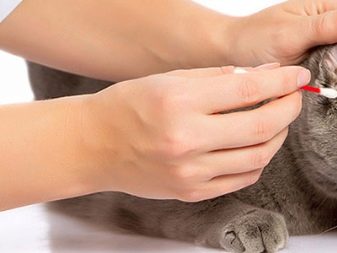
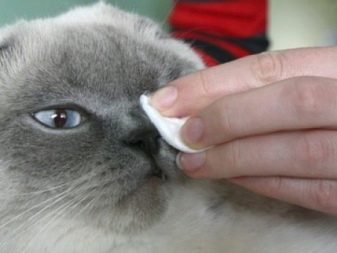
The use of an aromatic wet wipe can cause inflammatory conjunctivitis.
Dental care
To keep the pet's teeth in good condition, the owner can buy him a special toy - an edible chewing stick. Alternatively, you can use a cat toothbrush and toothpaste. Brushing the teeth of a Scottish cat should be done 1 or 2 times a week. Scottish people do not like this process, therefore it is better to accustom them to this from an early age.

Kitten care
Scottish kittens do not need special care. They can be fed with dry food, but of good quality. You shouldn't brush your kittens unless there is a reason. Babies with long hair need to gradually get used to the comb, carrying out the procedure twice a month. Bathing little Scottish must be done only if they are heavily soiled in the mud.
From an early age, kittens need to have their claws trimmed to get used to this procedure. You don't need to clean your ears, but if they smell unpleasant, then this is a reason to go to the vet. Watery eyes should be wiped once every 7 days with a cotton pad soaked in chlorhexidine.

Possible health problems
Genetically, Scottish health is not considered ideal. In animals, deformation of the bones, tail hardening, and problems with movement occur. The cause of these problems is crossing fold and fold. Scottish cats may suffer from heart disease or polycystic kidney disease.
Every year it is required to vaccinate the animal against dangerous diseases. The first vaccination is carried out at 2-3 months, and if the owner does not have time in time, then the animal is vaccinated after his teeth change. The procedure is repeated 14 days after the first inoculation. Kittens should be given an anthelmintic 10 days before the vaccination procedure.
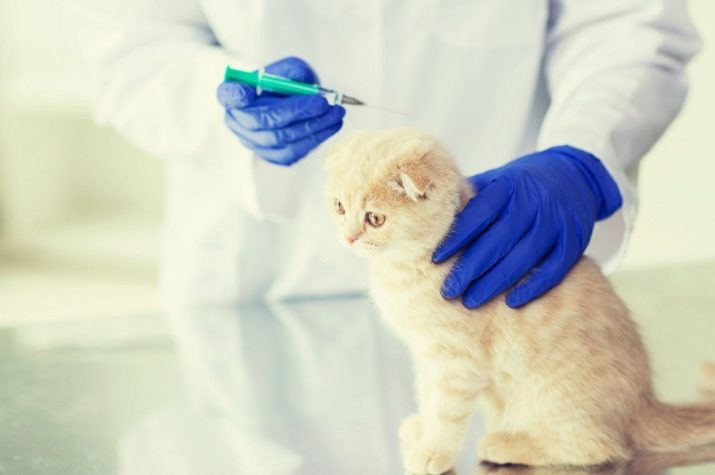
After vaccination, the pet is sent to quarantine for 10 days.
Vaccination for Scottish people is needed for such ailments as calcivirosis, panleukopenia, rhinotracheitis, chlamydia. It is imperative to vaccinate the animal against rabies. If your pet is outdoors for a long time during the day, he will need flea and tick protection. For this purpose, you can purchase a special spray, collar, drops.
Castration and sterilization
If you do not want to breed Scottish cats, you can neuter or neuter your pet. After this operation, the animal will not be able to have offspring. The procedure is carried out for both sexes.
In a neutered pet, the desire for mating remains. This procedure is carried out until the age of one year of the animal, when it reaches puberty. During sterilization, the fallopian tubes are ligated for cats and the vas deferens for cats. These operations are safe for animal health and do not take much time.
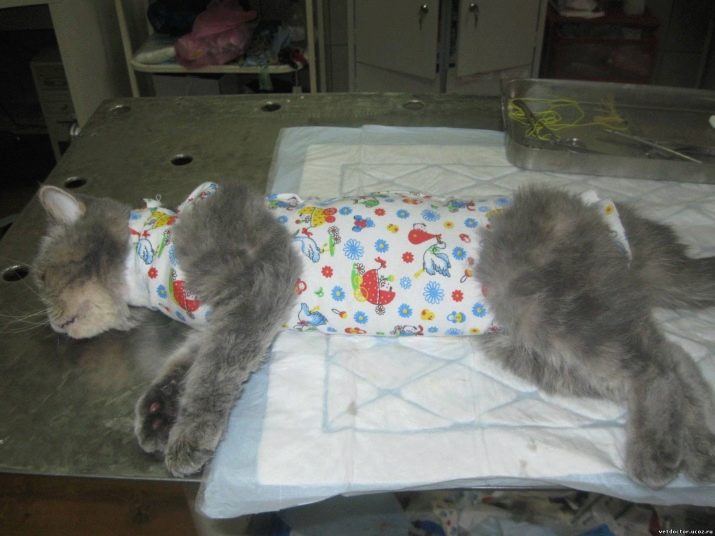
What to feed?
Scottish cats are prone to obesity, so the pet's diet must be taken seriously. You can feed him dry or wet food, as well as natural products. The animal's diet should contain a large percentage of meat. If the owner decided to give preference to factory feed, then you need to buy special food for this breed and only of high quality.
Natural food for a Scottish pet must contain the following components:
- low-fat meat, which is treated with boiling water or given frozen;
- boiled offal;
- boiled fish without bones and it is better if it is seafood;
- eggs and fermented milk products, kittens are given milk;
- vitamins and minerals in the form of nutritional supplements.
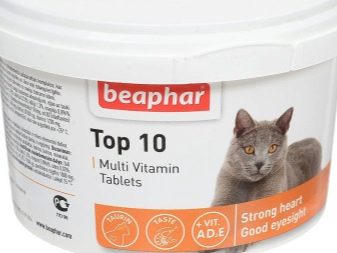
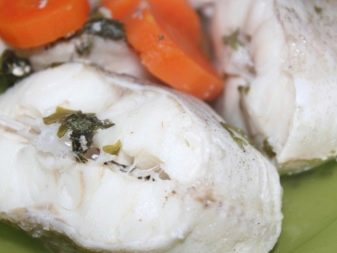


If the food of the animal is of low quality, then its appearance will suffer from this, food allergies may occur, the condition of the coat and the digestive tract will worsen. The main rule of feeding Scottish dogs is not to mix natural food and industrial feed. Porridges cooked in broths or in water are considered useful for pets, they can also be given vegetable purees and egg yolks.
Ready-made cat food contains all the nutrients the animal needs. It is better to purchase premium pet food, it is not cheap, but very healthy. The neutered cat is fed with special food.
Adults who have reached eight months of age need to be fed twice a day, and kittens are given food 4-6 times a day.
Upbringing
Since habits are difficult to eradicate, it is worth starting the upbringing of a Scottish cat from an early age. As soon as the kitten crosses the threshold of the house, he should make it clear what is allowed and what is not. During educational activities, it is necessary to take into account the biorhythm of the animal. It is not necessary to teach a kitten in the early morning, in the evening, and also in the afternoon.
Scottish needs to be littered and made clear that he is prohibited from damaging interior items and indoor plants. The cat should not allow itself to steal food from the table and react aggressively to prohibitions. Besides, the pet needs to get used to living in peace with other pets, rest and go to the toilet in specially designated places.
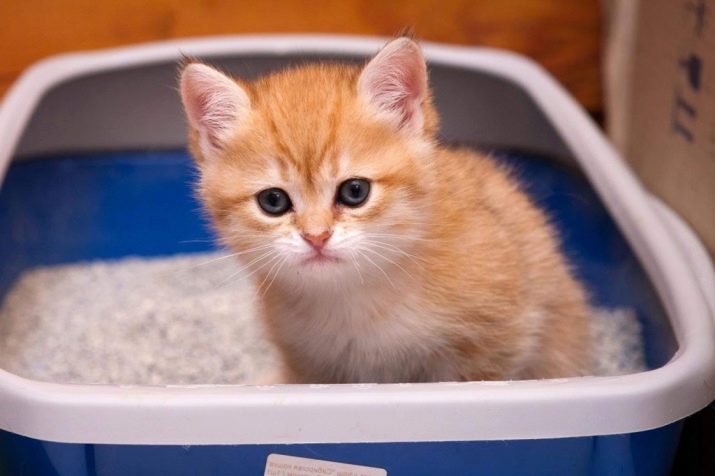
The Scottish cat is capable of following certain commands. You can train an animal with the help of rewards and punishments. A feature of the Scottish is the ability to stand on their hind legs for a long time.when the pet is interested in something from above - this ability is often used during training.

Breeding
Scottish dogs are ready to mate at the age of 10 months, but mating should not be allowed at this time, since pregnancy in a female can proceed with complications, and the offspring are prone to death. Mating should be carried out at 1.5 years old, when the animal's body is fully formed. The choice of a partner must be done in advance, since a cat's estrus lasts up to 6 days. Cats and cats are especially active in spring, while the male shows anxiety, aggression, and intensively marks the territory.
You can only knit straight-eared representatives of the Scottish breed with strides and folds. Mating with British cats is prohibited.When choosing a male, preference is given to an adult, healthy and vaccinated cat. When mating, the cat is left on the territory of the cat; for this, its tray, dishes are brought to it and the claws are cut in advance.
In the case of successful mating, you will notice that the cat feels nauseous in the morning, she has a good appetite, but there is a change in her favorite foods. A pregnant animal may show apathy, drowsiness, lethargy. The duration of bearing kittens is 60-65 days, and in some cases the pregnancy lasts 72 days.
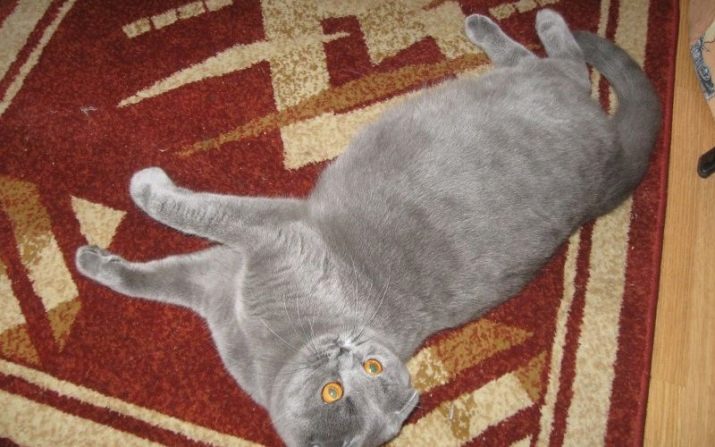
The duration of pregnancy is influenced by the weight of the cat, its age, the number of future kittens.
While carrying kittens, the following activities are prohibited:
- treatment with pills, drugs for fleas and worms;
- probing the cat's abdomen;
- changing the diet, for example, from natural food to store food;
- you can not carry a cat in your arms;
- it is forbidden to send the expectant mother for walks outside.
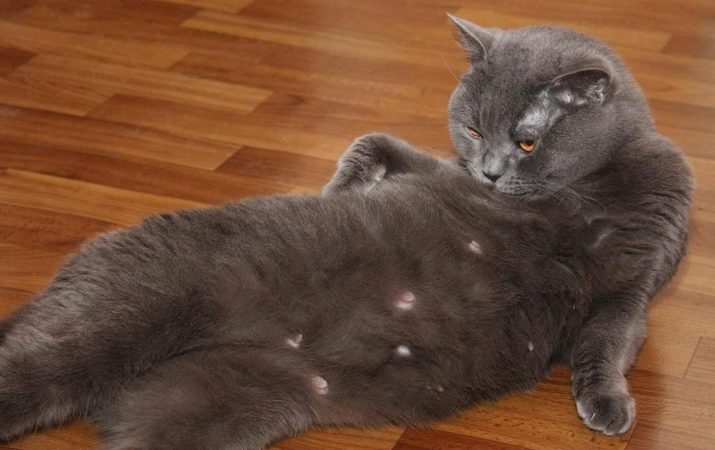
In the offspring of the Scots, a splitting of traits occurs, in this case, both fold and straight kittens are born. The breed may include kittens with or without mutant traits. Kittens have no special differences between themselves, apart from the shape of the ears. To avoid deformation of the skeleton of the animal, it is worth crossing the straight and lop-eared representatives of the breed. Lop-earedness in babies can be single, double, triple.
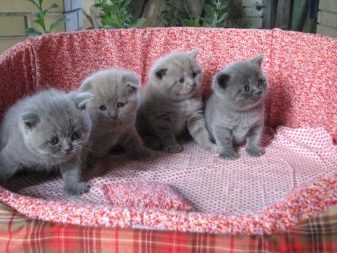
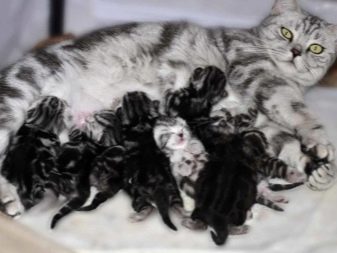
When breeding Scottish cats do not forget about the following points.
- Every owner of a thoroughbred pet should know that its cultivation requires material investments. Despite the fact that Scottish cats are not very demanding, it is still more difficult for them to settle down in new conditions than an ordinary domestic cat. Do not forget about the correct nutrition and the cost of it. Just like other animals, a thoroughbred pet needs a visit to the veterinarian and vaccinations.
- A Scottish kitten can be bought at the show or in the cattery. The seller must have on hand documents that confirm the feline pedigree. Also, the kitten must have a special mark confirming its purebredity.
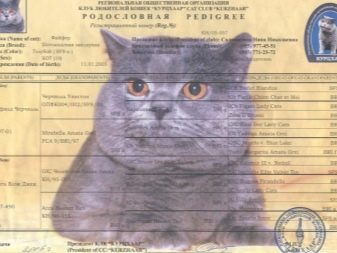
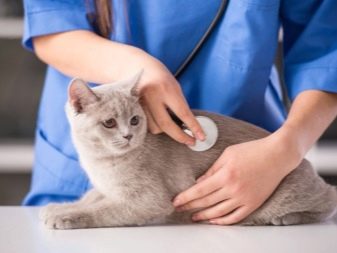
If you are the owner of a purebred animal, then you can set it up with a partner found in a specialized club of cat breeders. You can also buy a purebred kitten there.
When choosing a pet, you need to pay attention to the fact that its coat is soft, there are no bald patches and mats, the ears should be clean, the tummy should not be swollen.
Owner reviews
Many people have a preference for Scottish cats as pets. Reviews of those who have already acquired such a pet testify to their companionable nature. Many owners note the Scottish's sharp mind, ingenuity and exemplary behavior. Aggression for animals is not noticed, the Scots are very patient with children.
Scottish is one of the most interesting representatives of the animal world. They are distinguished from other breeds by their unusual color and peculiar shape of the ears, independent and friendly character. This pet loves to eat a lot and tasty, so that he does not suffer from obesity, the animal's diet will have to be monitored. The wool of Scottish cats has a low allergenicity, however, they should not be started by people who cannot tolerate the wool of any representatives of the animal world.
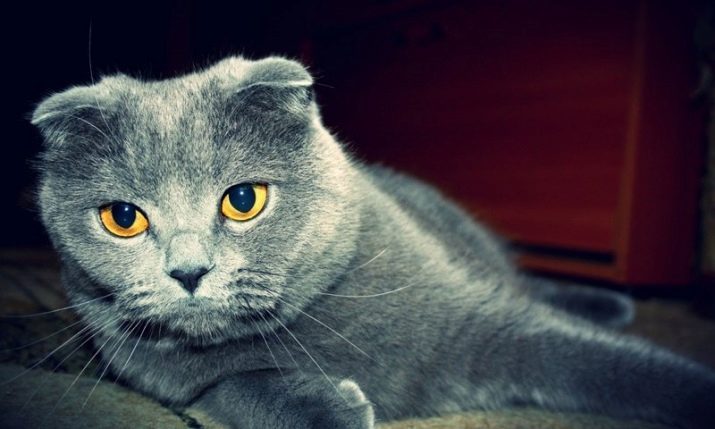
Scottish cats are not only cute and cuddly animals, but also true friends. If you want to get a pet, you should pay attention to this breed. People who have this creature at home do not regret their choice. This cat is smart, affectionate, caring, kind, undemanding.
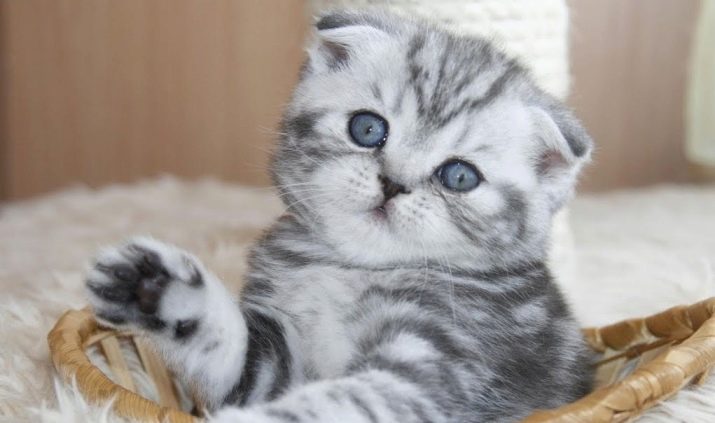
Despite the fact that pedigree kittens are expensive, it is still worth buying such a pet, but you need to be careful so that instead of a Scottish kitten you are not sold a kitten of another, less valuable breed.
For the features of Scottish cat care, see the next video.

































The Scotsman's name is Vasya.
I do not agree that they are very affectionate and friendly. When hungry, yes, it can come up. Even aggressive with strangers. Not everyone can be of the same character, as is argued here.